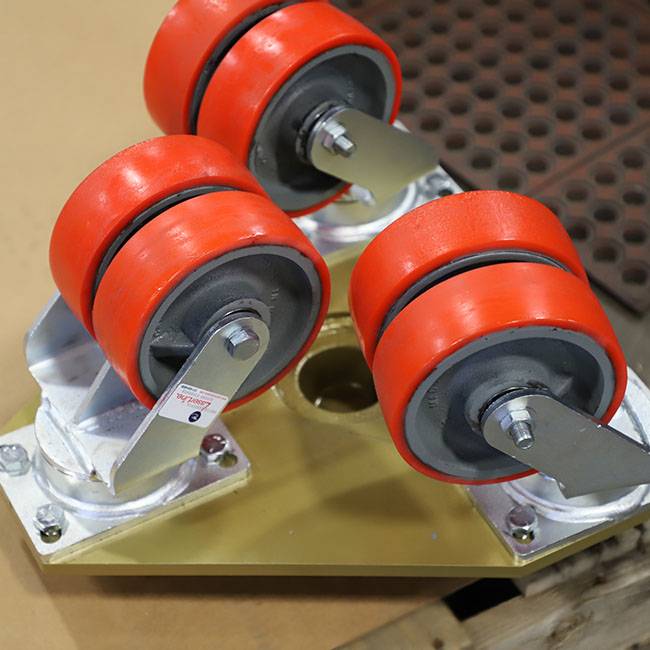

A caster consists of the rig (the part that holds the wheel) and the wheel. It mounts to the bottom of a larger object, such as a cart or dolly, so operators can easily move the object. Casters come in different materials, wheel diameters, tread widths, load ratings, and overall heights to give your equipment mobility in many kinds of work environments. Casters vs. wheels need to be considered.
There are two primary types of casters: rigid and swivel casters. A rigid caster features a wheel attached to a stationary fork, with a fixed orientation upon installation. A rigid caster allows for straightforward linear movement, i.e. such as rolling forward or backward. A good example is the rear wheels on a shopping cart, restraining the cart’s motion to a straight line.
Similar to the fixed design of a rigid caster, a swivel caster wheel is affixed to a fork. However, a swivel joint positioned above the fork grants it the freedom to rotate seamlessly in a full 360°, allowing the wheel to move in any direction. This design facilitates effortless cart movement without altering its orientation. Many carts are equipped with a mix of rigid and swivel casters, providing the dual advantage of easy turns and straight-line tracking.
When the accurate and precise positioning of materials is crucial, achieving the correct combination of swivel and fixed casters becomes imperative. This guarantees that materials are transported accurately to their designated points of use. In scenarios involving the placement of heavy duty fixtures, such as in aircraft manufacturing or the relocation of large fiberglass boat molds, caster selection and placement play a pivotal role in minimizing the potential risk of damage.
 When choosing industrial wheels, safety, weight capacity, ergonomics, and environmental conditions can all come into play. All these factors help determine what type of wheel and wheel material you need. Polyurethane is very popular due to its many beneficial characteristics (chemical resistance, heat resistance, rolling resistance, etc.) that you can formulate a wheel to your specifications. Forged steel, iron, and mold-on rubber are also some other available options that make up wheels.
When choosing industrial wheels, safety, weight capacity, ergonomics, and environmental conditions can all come into play. All these factors help determine what type of wheel and wheel material you need. Polyurethane is very popular due to its many beneficial characteristics (chemical resistance, heat resistance, rolling resistance, etc.) that you can formulate a wheel to your specifications. Forged steel, iron, and mold-on rubber are also some other available options that make up wheels.
Carts with wheels made from harder materials are generally easier to get moving than wheels made from softer materials. Harder wheels have a lower rolling resistance which makes them easier to push. However, wheels made from softer materials are generally quieter and more forgiving when moving something because they transmit less vibration.
As a whole wheel casters offer many benefits. Their ergonomic benefits include reducing the effort to move heavy objects to reduce injuries and the associated costs. They also can be designed to withstand high temperatures, corrosive elements, and take a lot of abuse when properly reinforced.
Many components and intricate features go into the making of casters and wheel casters. And while knowing all this information can help you make a better choice, it can also be overwhelming. We’ve also included a video below that explains the difference between a caster and a wheel. We hope this helps!